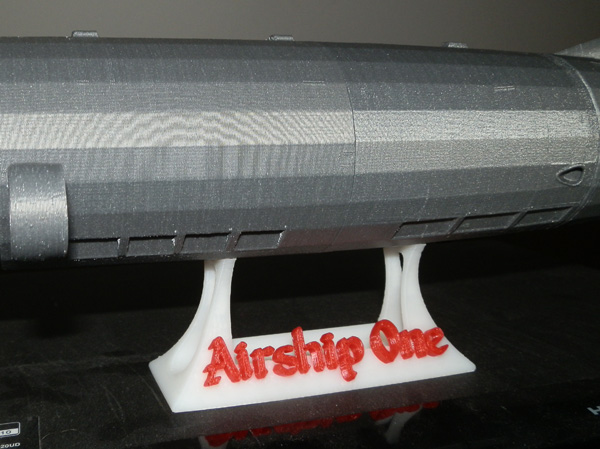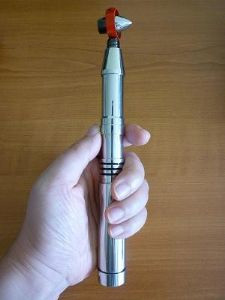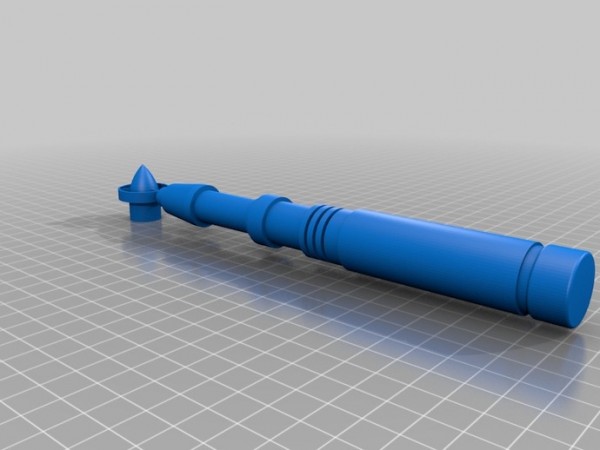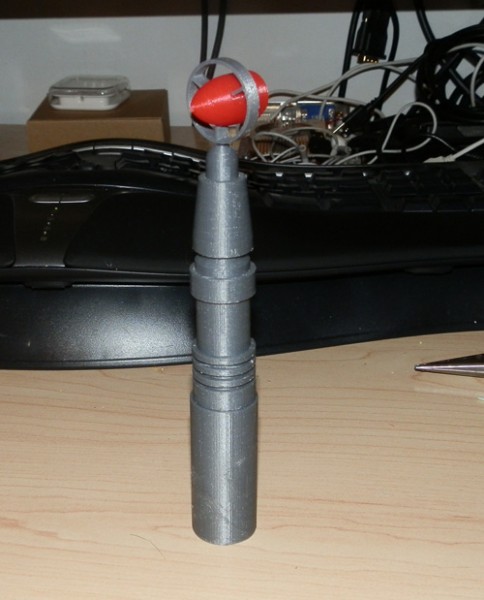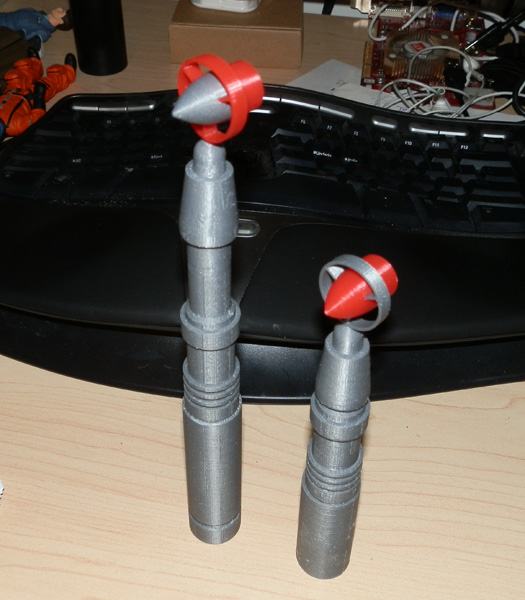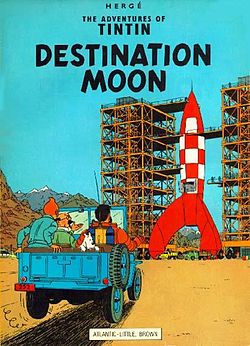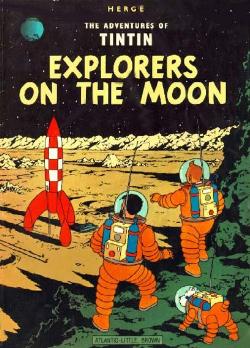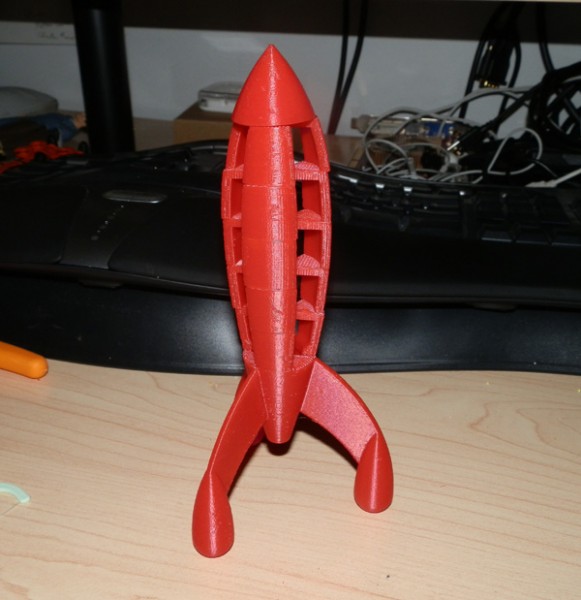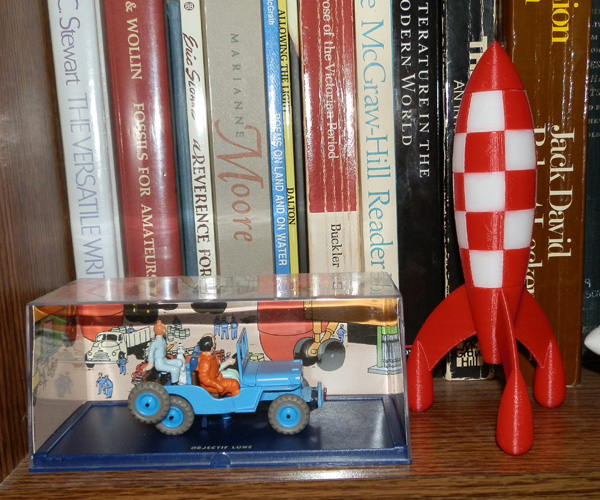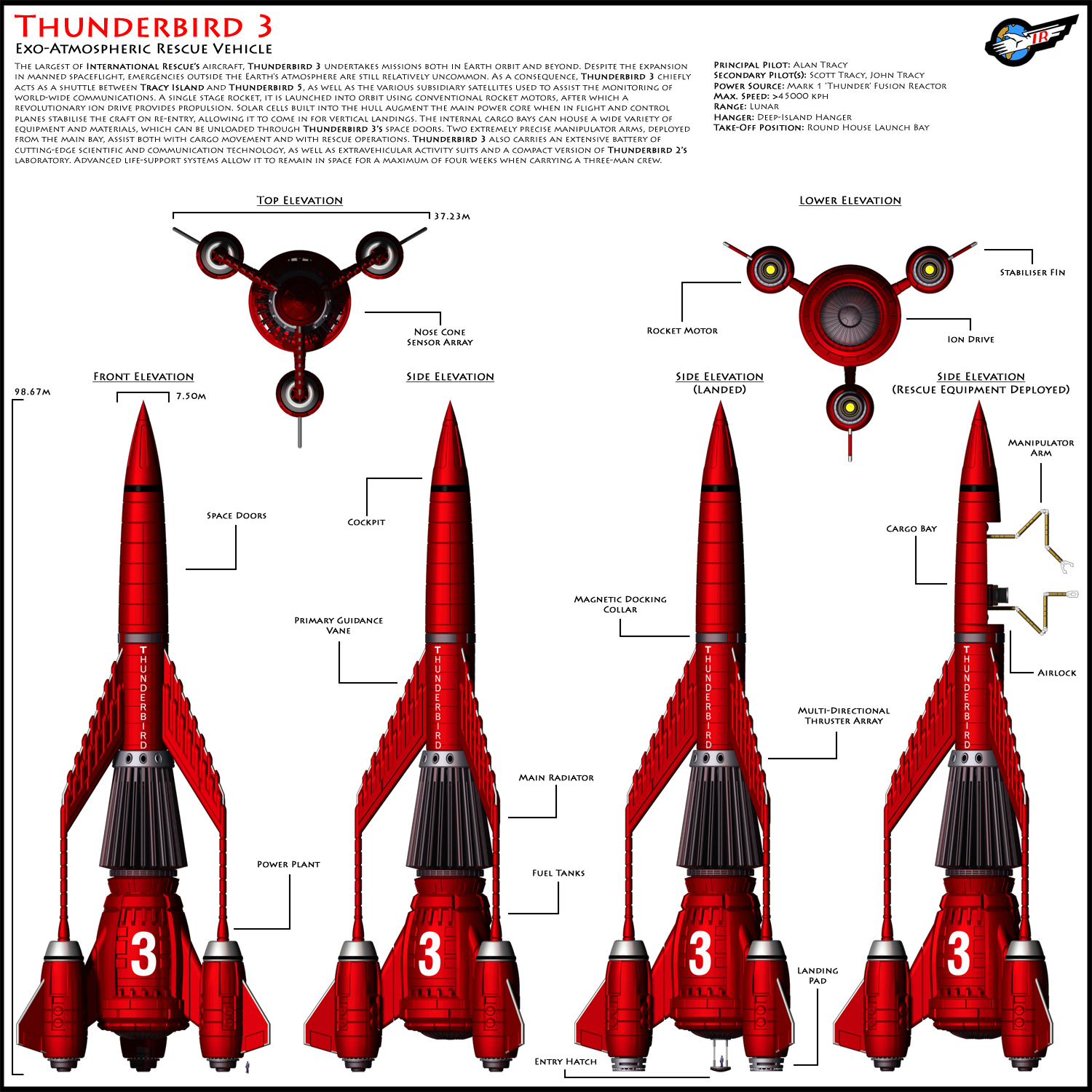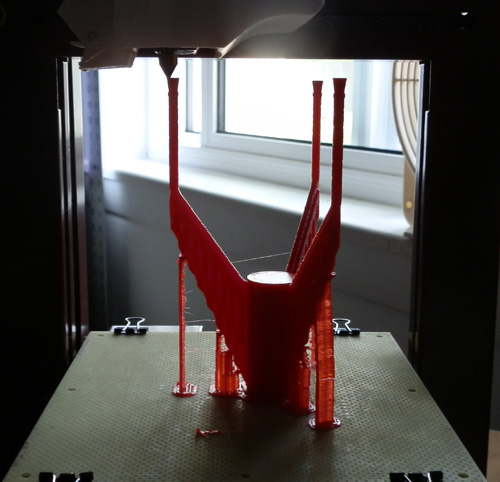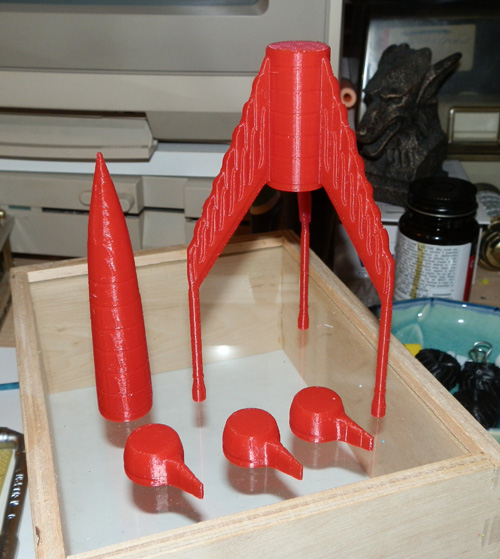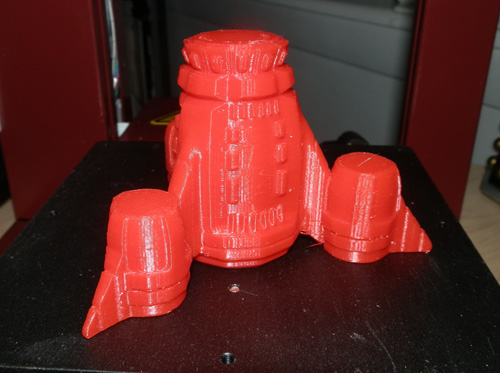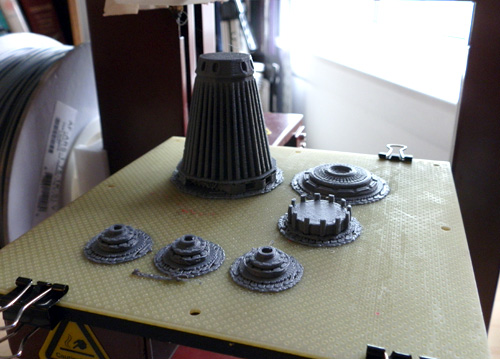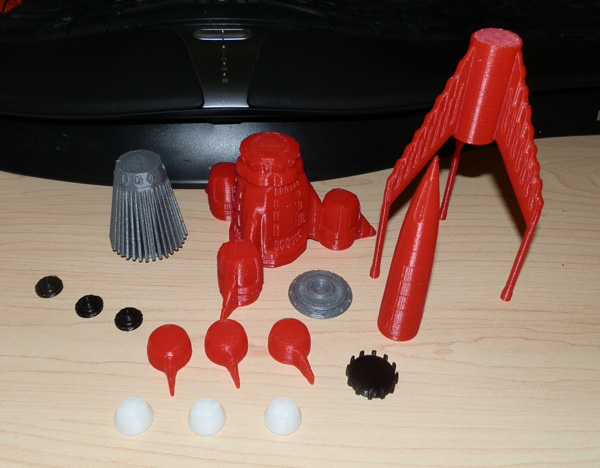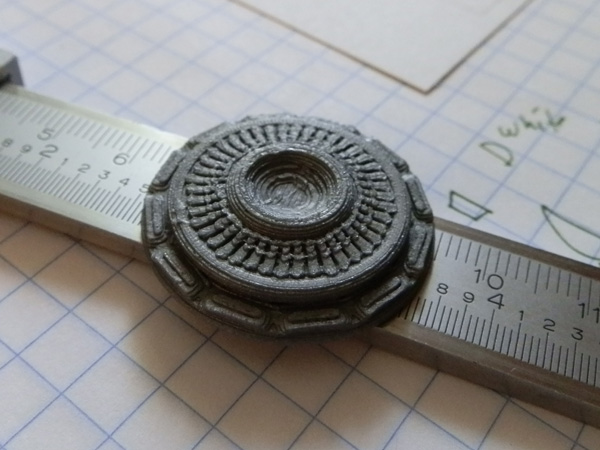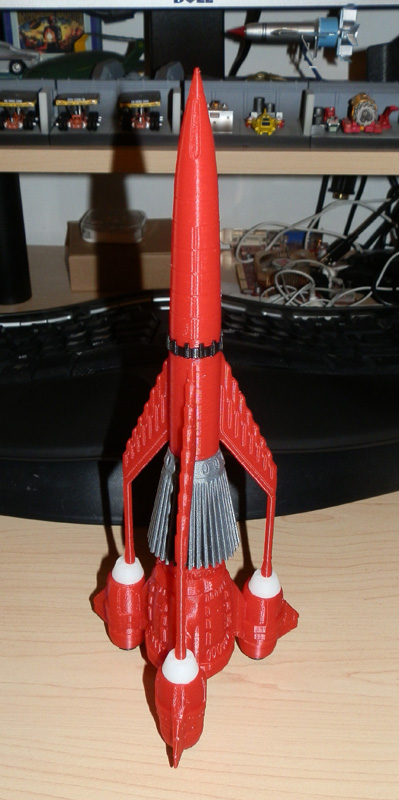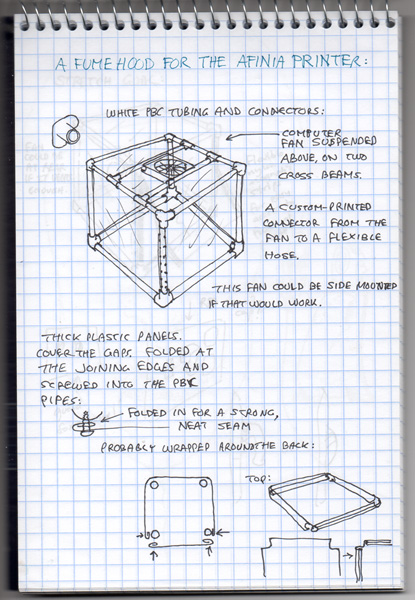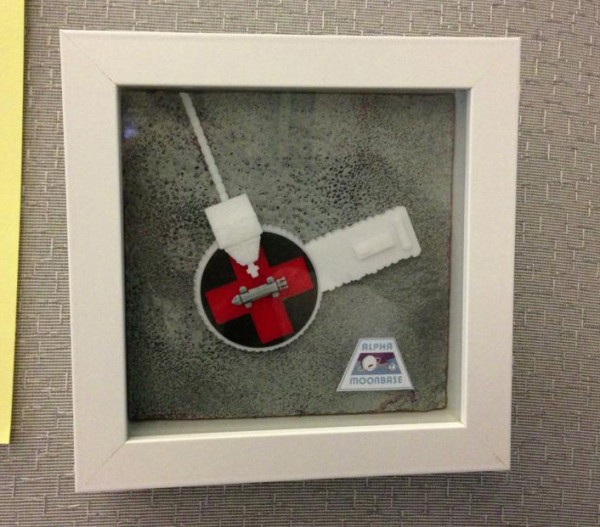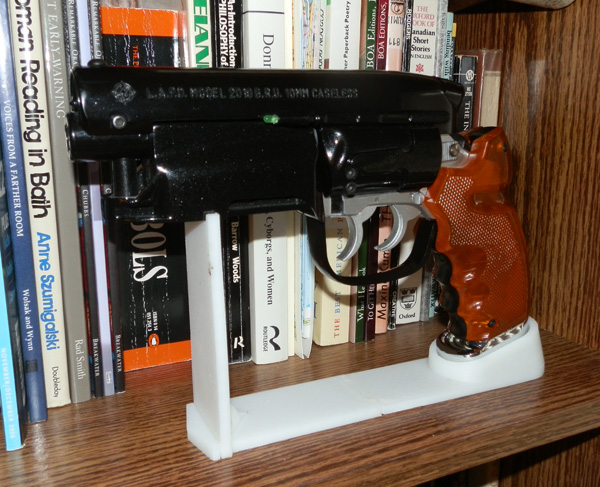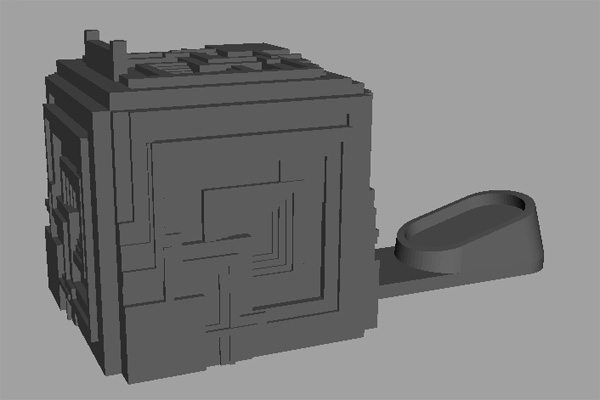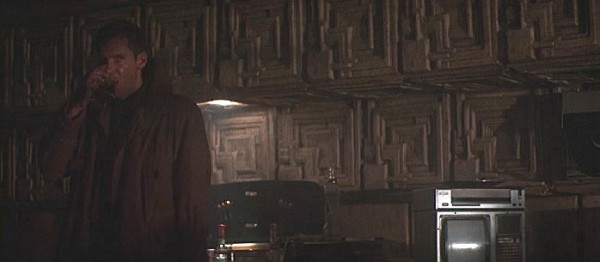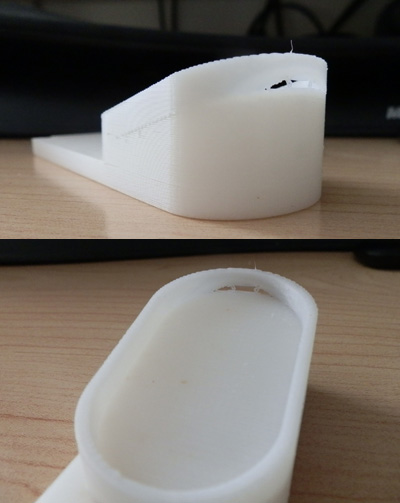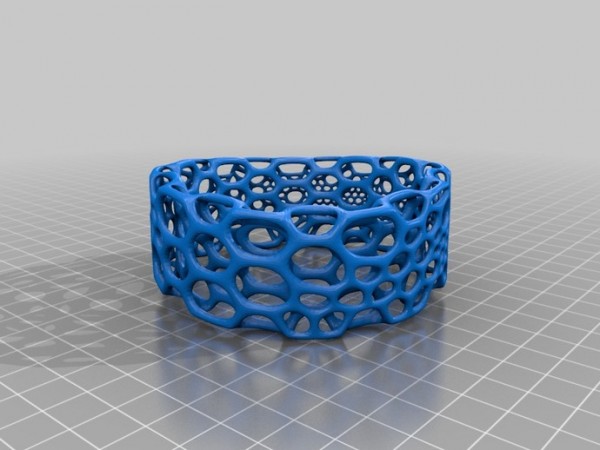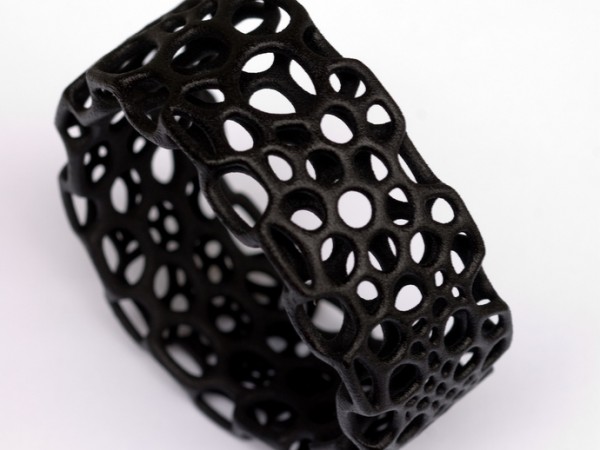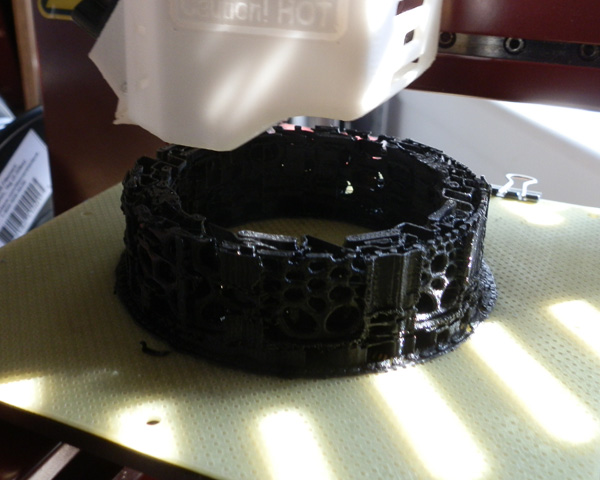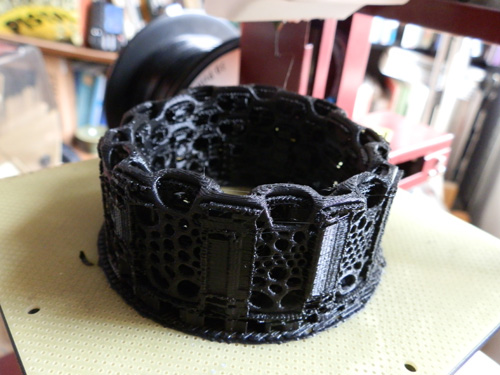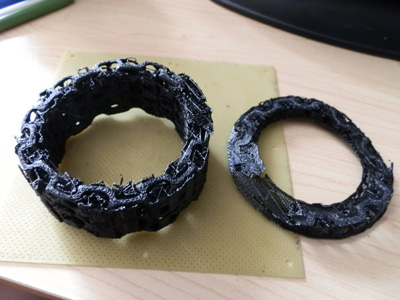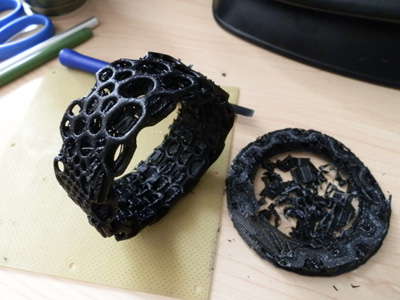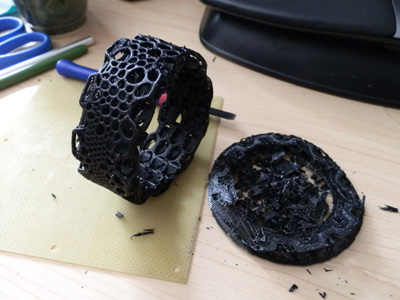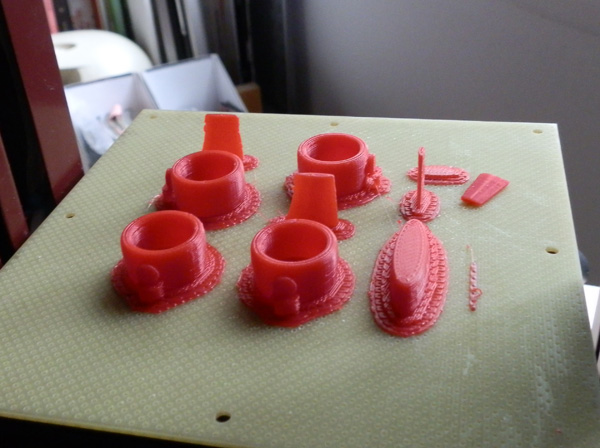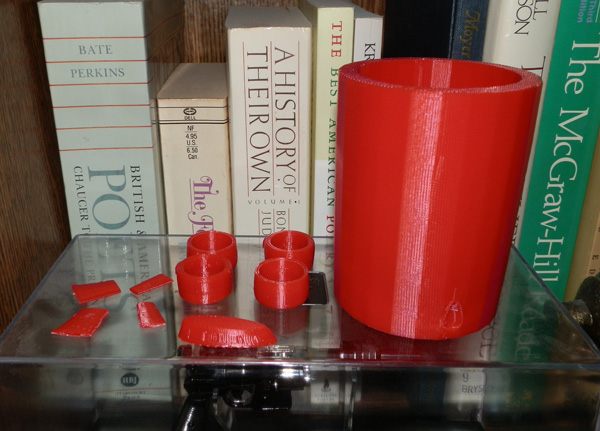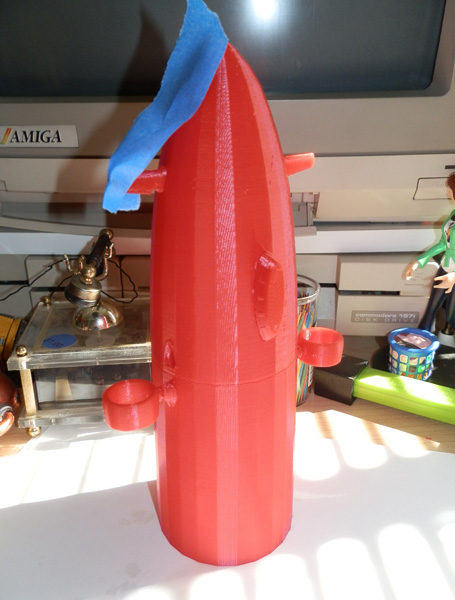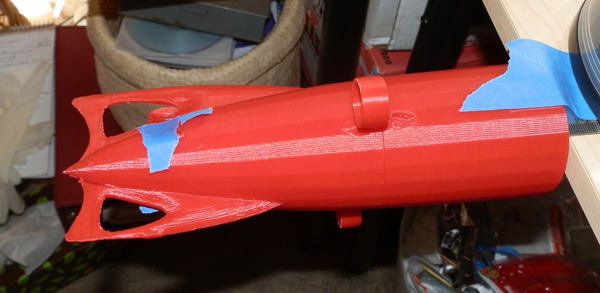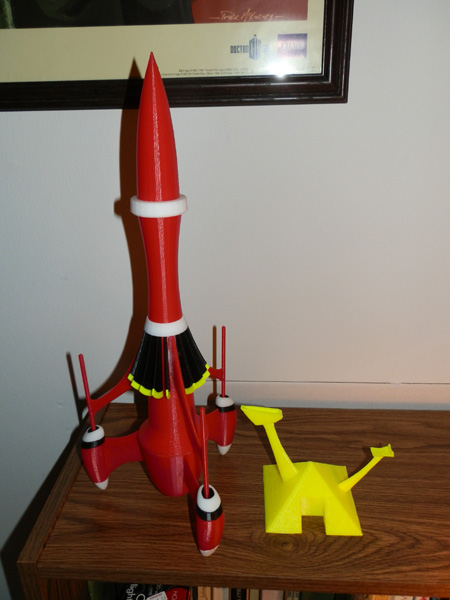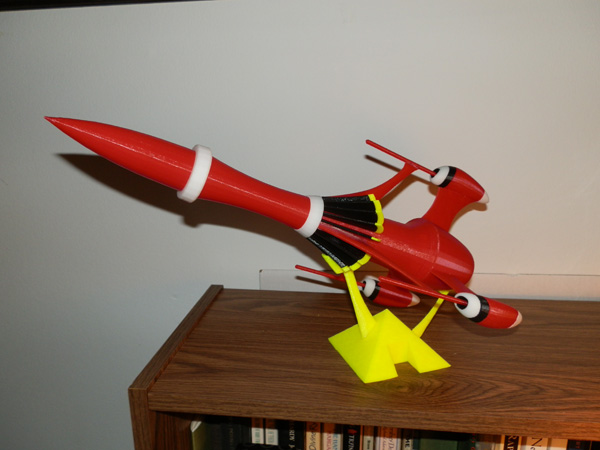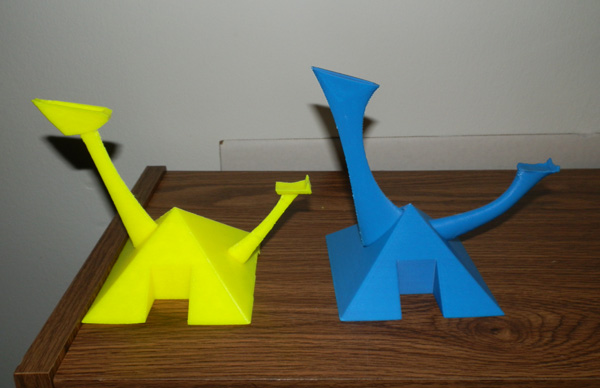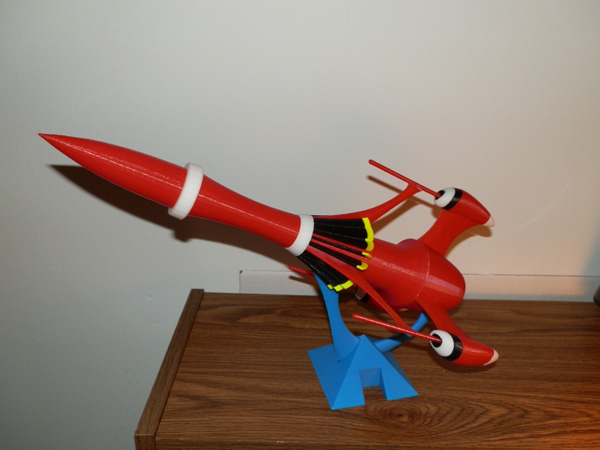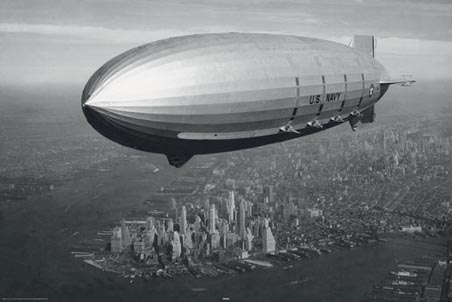
Airships. Dirigibles. Zeppelins. They are a fascination to me, and always have been. I really feel I missed out on something when they went out of service in the late 1930s.
There is something amazingly romantic about the grace of an airship, a passenger ship so stable in air that you could put a pen on a table pointing up, if it had a flat base, and it would not fall over during regular flight.
Imagine one of these massive whales floating soundlessly above you (unless the rather loud engines were operarting)! It must have been quite a majestic sight.
The Graf Zeppelin (a longer than three-foot model of which hangs above my 3D printer) operated for nine years from 1928 to 1937, making many voyages between Europe and North and South America.
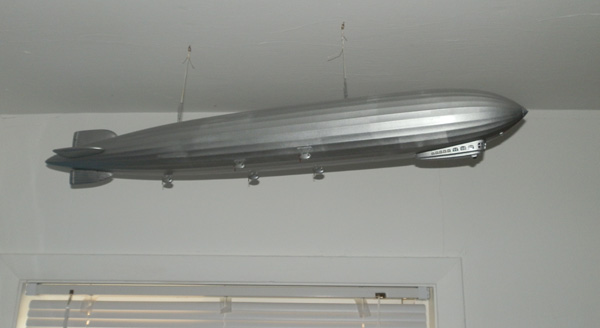
I have a 13″ model of the Hindenburg, famed for its use in Nazi propaganda, buzzing the German Olympic Stadium in 1936, but famed more for its disastrous end in New Jersey, when it ignited and went down on approach to landing on May 6, 1937.
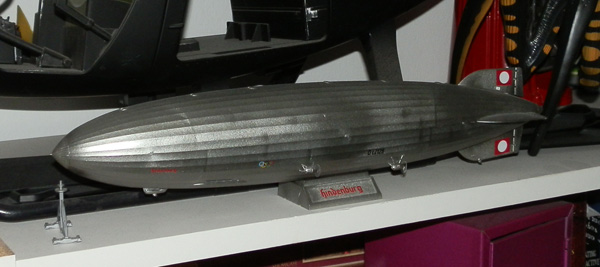
I even found and built several paper models (created by the amazing Ralph Currell) of various airships. These assemble so well I am amazed at the quality. Printed at home on my own printer with card stock, meticulously cut and glued, they are near perfect model kits for an airship enthusiast.
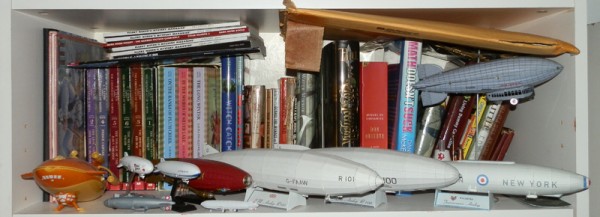
On this shelf you see the card models of R-101, the R-100, and the Vickers Transoceanic Airships. I have his other models, just not built yet. The great thing about these is if you can find a larger printer, you can print them in just about any size!
Also on the shelf is a recent tin lithograph model of the Graf Zeppelin (greatly exaggerated proportions) reminiscent of a 1930s toy. Also, starting from the left is the airship from the cartoon series The Secret Saturdays which opens up to be a playset, but is a nice airship toy regardless of that feature.
Next to it is a very tiny four inch model kit of the Hindenburg, and then a small toy from Indiana Jones and the Last Crusade in which Indiana and Henry Jones take an airship trip.
Above those are two blimps. These are not rigid-body airships, but I like them anyway.
And between the blimps and the paper models is one of the nicest toys I own – the Magisterium Air Bus from the film The Golden Compass:
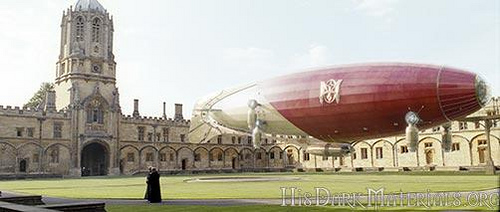
Think about it. The Empire State Building’s iconic tower was originally designed to dock airships, but the massive wind currents so high up made it impractical.
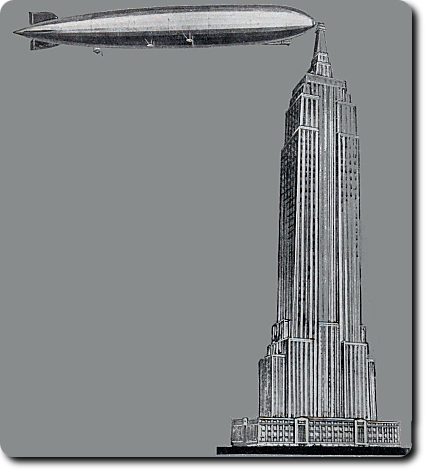
But not so to the creators of the film Sky Captain and the World of Tomorrow. No, they did it anyway:
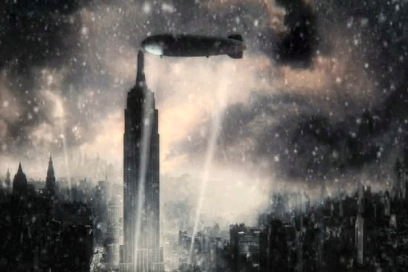
And make no mistake, they were not 100% safe.
This happened to the Los Angeles, a US Navy dirigible while it was attached to its mooring mast, when a large updraft came up unexpectedly.
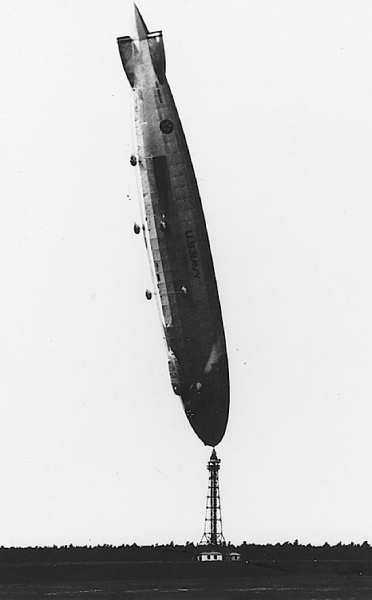
The R-101 crashed in France on its maiden voyage to Karachi, Pakistan. It had been designed well, then changes were made to the design in mid-build, making it heavier and less stable.
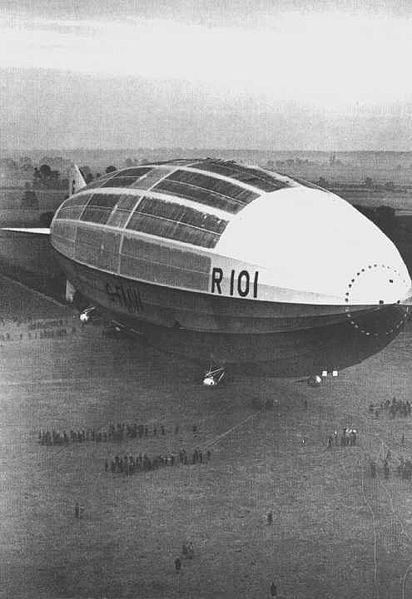
I have a particular fascination of this one because it was featured in a Big Finish Doctor Who radioplay: Storm Warning which takes place aboard the maiden flight. The Doctor meets his new radio companion Charlie Pollard who has stowed away aboard the R-101 so she can see the world. What she doesn’t expect is that the R-101 has a secret mission no one’s talking about, and she and the Doctor discover what’s really going on at 10,000 feet: a rendezvous with a mysterious visitor.
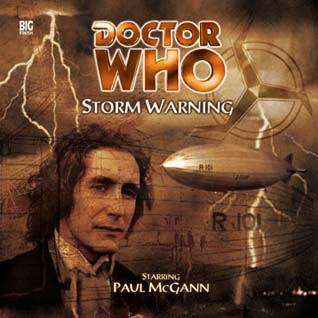
Airships have featured in many movies, not the least of which about the disaster of the Hindenburg itself, but also in popular culture films such as the aforementioned Indiana Jones and the Last Crusade, but also notably in The Rocketeer. I have a small collection of films (Airship, The Hindenburg, Zeppelin). It even featured in an episode of The Waltons TV series. A very hilarious episode of Archer features a helium-filled modern airship, which Archer continually sees as dangerous because of its hydrogen, even after being repeatedly told there was no hydrogen in the ship but harmless helium.
After the Hindenburg disaster, airships almost immediately became a thing of the past. Seen as dangerous due to their body packed with incredibly flamable hydrogen gas, they could have used helium to nearly equal effectiveness, but due to the war with Germany, the US refused to sell helium to Germany. The US held almost all of the world’s helium stores at the time. Today, helium, which is sadly a non-renewable resource, is used mostly in children’s party balloons, but if put to use in airships again, it would make for safe, cheap, fast freight and passenger travel again.
And so my fascination with these craft continues.
So knowing I was going to buy a 3D printer, in part to build airships for myself, I decided to get to work on a whole line of airships.
Here is the first, the 3D model done in Maya, a program I work with at my job.
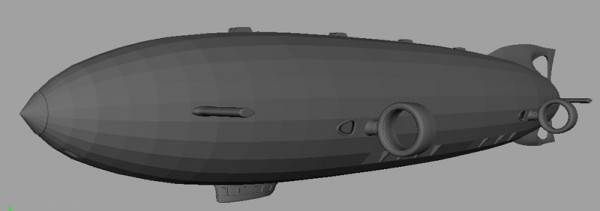
It’s meant to be fairly simple, though snazzy in design. A bit of a cross between the romantic past and the future. Note the interesting tail fins. Rather than have equally thick and large tail side elevator fins, I opted to go with smaller elevators both at the front and the rear, which would make ascent and descent much easier. The engines are not the clunky propellor-driven Maybach engines that drove the Graf Zeppelin; no, these are bladeless turbine engines similar to the ones made famous by James Dyson, who even more famously invented not a better vacuum cleaner, but a method to sell vacuum cleaners to men.
These engines each have an air intake just fore of their mounts to bring in the air it shoves out through the circular apertures. They also tilt. In my model the engines actually tilt. The elevators do not, but we can pretend, right? By tilting, the airship can lift off and land simply by aiming its engines.
I cut the body up into four sections which would fit comfortably on my Afinia 3D printer, which as a cubic capacity of 5 inches all-around. (Though I think I cheated the height. The tail section is slightly more than 5″ tall and printed fine.)
Here are the pieces needed to print the whole thing:
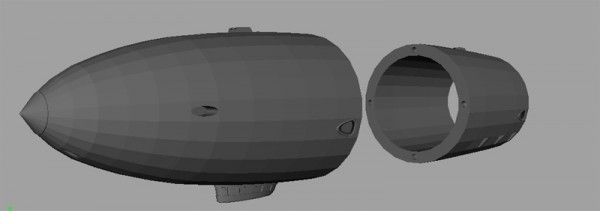
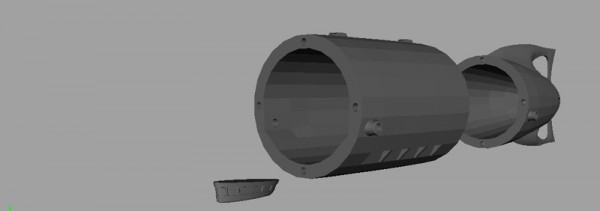
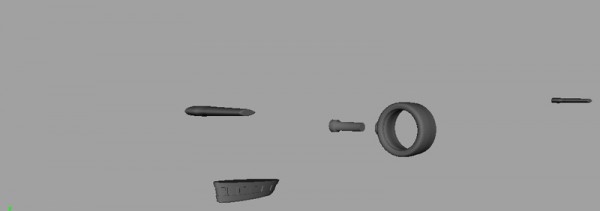
There are four holes in each body piece where they join. This allows for pins to fit in to connect them snugly together without glue, if necessary.
I printed the whole thing (in red because I had a lot of red filament. You can see the initial result here.
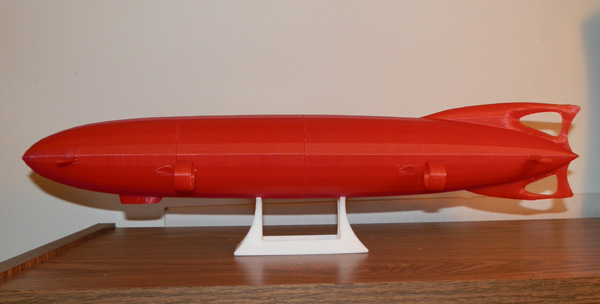
Now I’m printing it again with my new silver filament.
So far I have the parts completed:
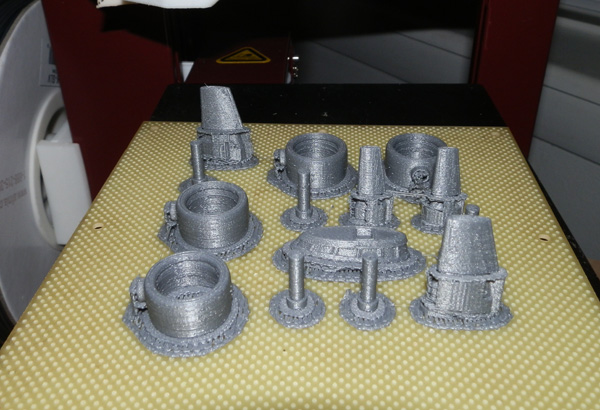
I printed one test ring of a portion of the body so I could test the engine tilt mechanism:
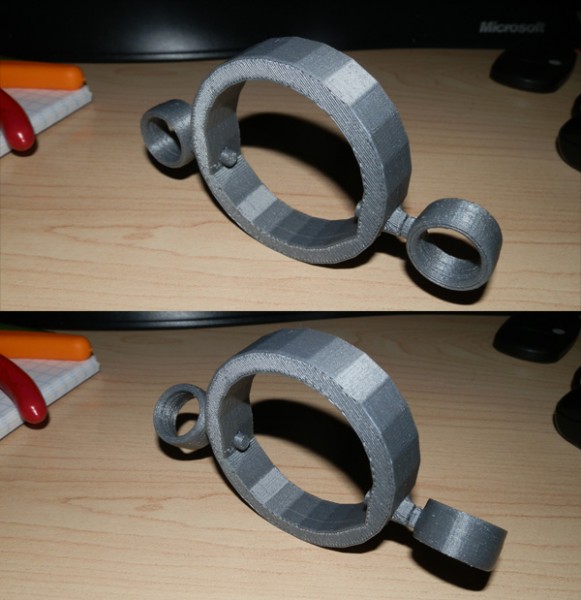
And last night, on July 17, I printed the second body section and attached the engines, and inserted the connecting pegs in the body:
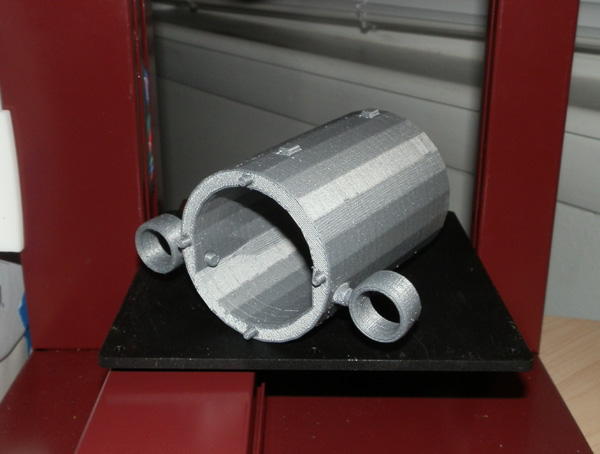
Tonight I printed the nose section. Here it is, below, snapped (with pegs) to Section 2, with front elevators in place, wheelhouse (epoxy-glued in place because I hadn’t yet modeled a nice peg hold connection for it yet) sitting on the printer that is currently printing Section 3.
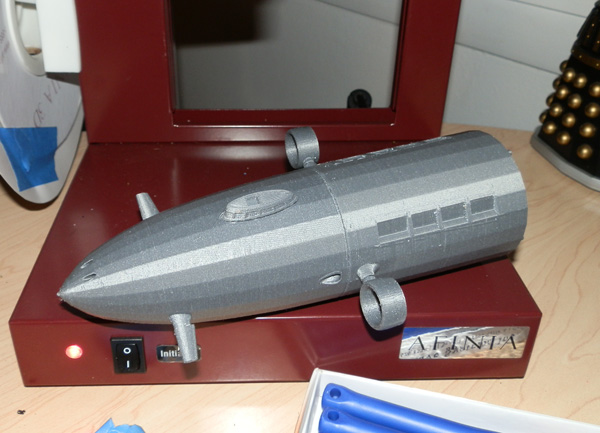
Note the small square hole in the bottom of the wheelhouse. That’s for landing gear to go, but I haven’t modeled that yet. There is a corresponding hole in the bottom of the tail fin for rear landing gear.
Here is Section 3 on the printer: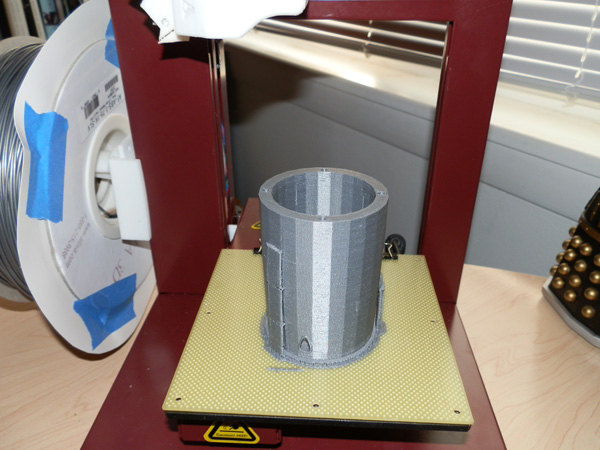
Looks good. I took it off the bed and attached it to Section 2 using the pegs. Here you see Airship One about 3/4 printed, next to its prototype:
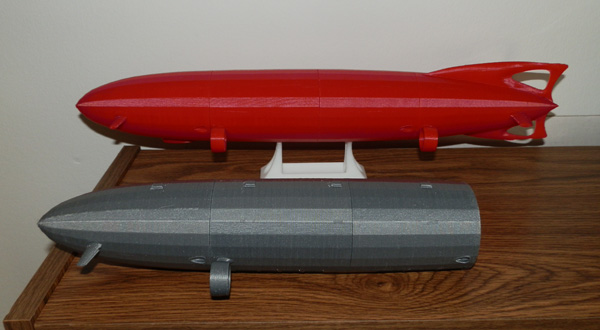
However I noticed something I didn’t like. I got this once before too, when printing my friend Fred’s head – a stress crack.
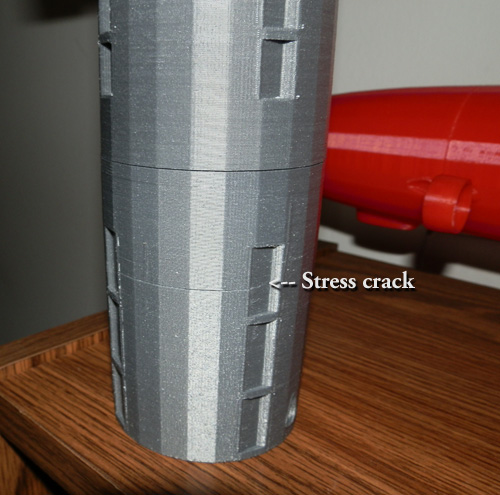
I’m not sure what causes this, but it’s happened twice now, somewhere around the middle of a large, volumetric print. I wonder if it has to do with my choice if inner fill size. I wasn’t using the largest on this model, but also not the smallest. I may have to print this part again.
Update July 19:
I printed the tail section, Section 4 tonight. It’s essentially the same model as when I did it in red, but I did make some minor adjustments. Here you see how it prints support scaffolding inside the fin space in order to print the top part of the fin. Easily removed.
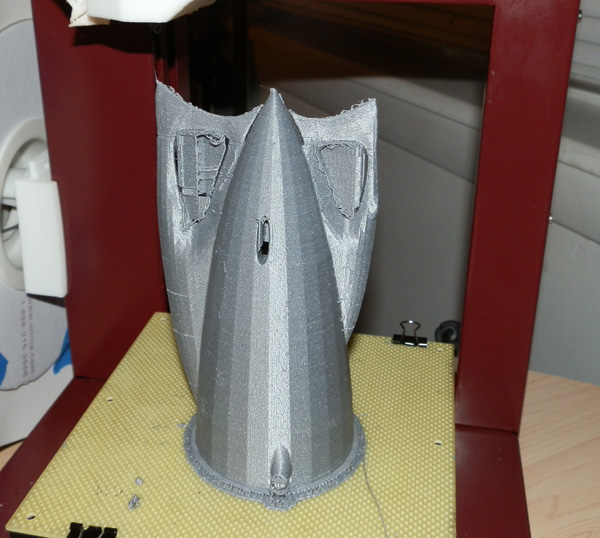
One thing that surprised me, however, is that where I put a crimp in the tail for the tail rudder hinge, this time the printer thought those crimps were too small, and it separated out the tail rudder on the outer section.
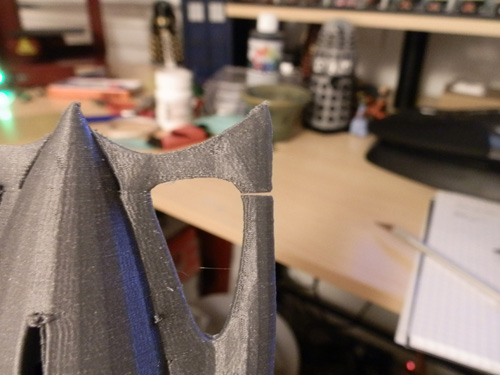
Nothing a bit of epoxy cement couldn’t fix, but it was a surprise.
And here she is, Airship One in all her glory:
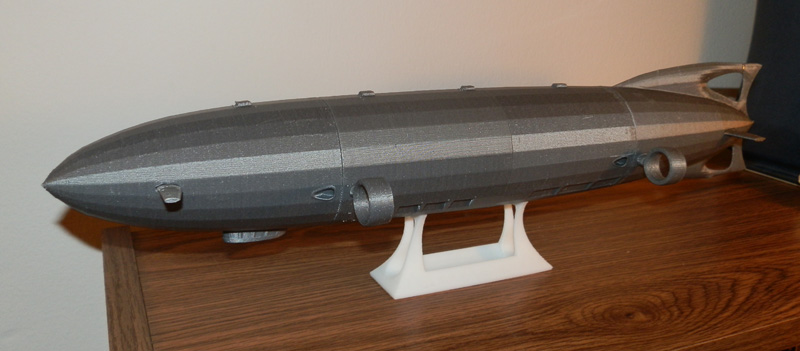
Update, July 21:
I decided to try embedding the ship’s title, “Airship One” into the display base.
So I chose a font that was reminiscent of the Hindenburg title font and extruded it in Maya, then subtracted part of it from the base, as shoes for the letters to fit into.
Here is a test print (printed in natural off-white) of the letters which I printed when I printed the base. The letters would, if they fit, later be reprinted in red.

Silly me. This is why I test-print things. Some of these letters, when put onto the base, will only have the bottoms attached. So the letter “i” was going to be missing its dot. I also noticed some letters separated where they were very thin, making two pieces of plastic, some of which would also have to hover, which would not work.
So I manually thickened the font, moved the i dots down to touch the bases, and reprinted in red.
I still am not fond of the propensity of the Afinia to not print small textual letters as solid. They print with holes extruded down the faces. I wish they would print better at this small size. I noticed the same thing on my spool reel holder I modeled, with my name and the name of the spools it holds extruded in.
But overall, I’m delighted with the result. Each letter is epoxy-cemented in place just by their bottoms, most of them.
